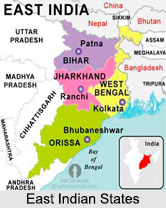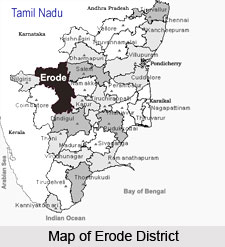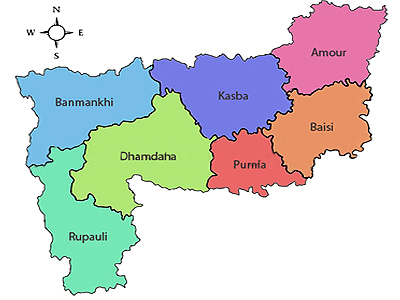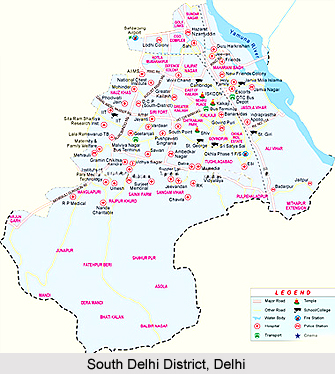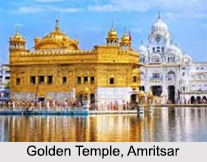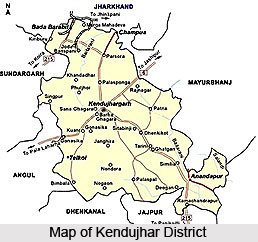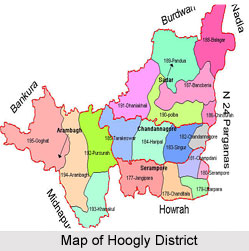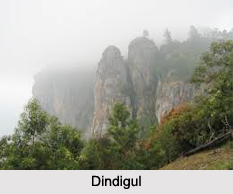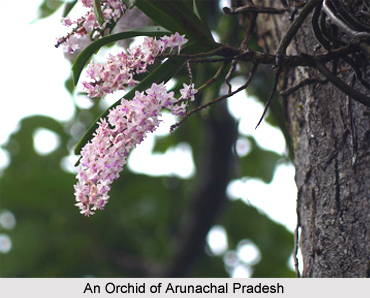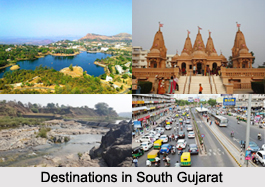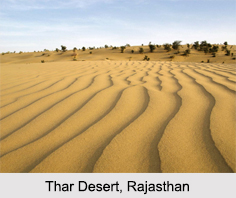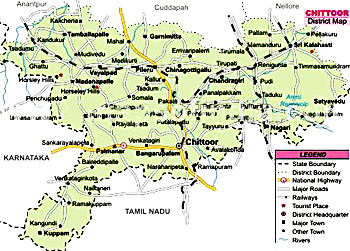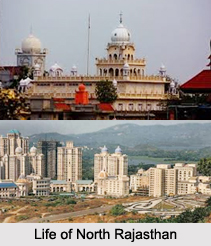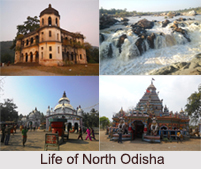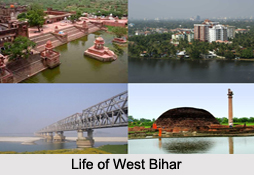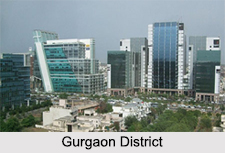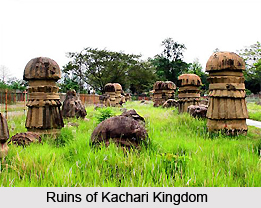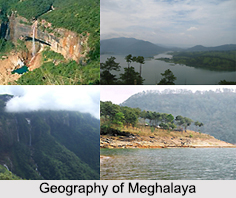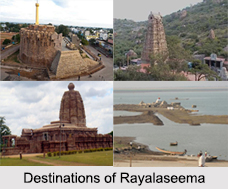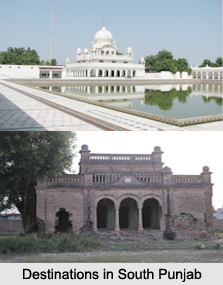Introduction
Udaipur district is located in the state of Rajasthan, in the western part of India. The historical city of Udaipur is the district headquarters of the Udaipur district. The district has a rich historical legacy, and this tradition is still carried forward in the cultural life of the state. The various festivals celebrated by the district are a must see site when on a visit here. Most of the times, these festivals are held to mark the advent of a particular season, such as Teej which marks the beginning of the monsoons and the Mewar festival which celebrate the onset of spring.
Location of Udaipur District
Udaipur district is located in the state of Rajasthan. It lies between the north latitudes of 23 degrees 46 minutes and 25 degrees 5 minutes, and the east longitudes of 73 degrees 9 minutes and 74 degrees 35 minutes. The district of Udaipur is bounded on the northwest by the Aravali mountain range, across which lie Sirohi and the Pali district. It is bounded on the north by the Rajsamand district, on the east by the Chittorgarh district, on the southeast by Banswara district, on the south by the Dungarpur district, and on the southwest by the state of Gujarat. It is part of the Mewar region of Rajasthan.
Geography of Udaipur District
The district is generally hilly. The western portion of the district is drained by the Sabarmati River, which originates in the Aravali range of Udaipur district and flows south into Gujarat. The northern portion of the district is drained by the tributaries of the Banas River, including the Ahar River, which flows through the city of Udaipur. The southern and central portion of the district is drained by the tributaries of the Mahi River, including the Som River and the Gomati River. Dhebar Lake, also known as Jaisamand Lake, has an area of 50 km square (20 square miles) when full, and was created in the 17th century when Rana Jai Singh of Udaipur built a marble dam across the Gomati.
Udaipur District, RajasthanAdministration of Udaipur District
The Udaipur division consists of six districts. The Divisional Headquarters is situated in Udaipur. The following districts comprise the Udaipur division: Udaipur, Rajsamand, Chittorgarh, Banswara, Dungarpur and Pratapgarh. The office of the Divisional Commissioner is situated in the campus of Commissioner Office, Udaipur. Udaipur is the largest district of the division and administrative control and monitoring of this division is carried out mainly from here. District Magistrate and Collector is the head of District Administration. He is assisted by two Additional District Magistrates- Additional District Magistrate (City) Additional District Magistrate (Administration)
For administration and development, the district is divided into seven sub-divisions viz Girwa, Kherwada, Mavli, Vallabhnagar, Kotda, Jhadol and Salumber. These sub divisions are further divided up into Tehsils and sub-tehsils.
Culture of Udaipur District
Culture of Udaipur district is seen exhibited in the various festivals that are celebrated in the district. These festivals are celebrated with a lot of fun and gaiety, and are usually held to mark the advent of a particular season. Like the Teej festival heralds the advent of the monsoon season, and the Mewar festival is held at the onset of spring. A number of traditional dances, songs and other cultural programs are put up during these festivals which are a real sight to behold when on a visit here. Shilpgram is a crafts village which holds a ten day festival exhibiting the various traditional art and craft forms of the state, and is a must-visit when on a trip to Udaipur.
Festivals in Udaipur District
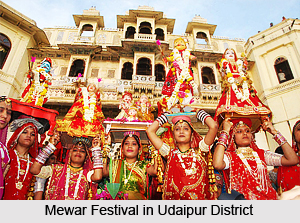 Festivals in Udaipur district are celebrated in a big way and with a lot of pomp and show. The festivals have a lot to offer the tourists in terms of the glimpse that they offer into the traditional arts, crafts and cultural facets of the district. There is a lot of singing, dancing and a wide array of traditional cultural activities which are hosted during the time of these festivals, all of which are a great delight to watch and participate in. Most of the festivals are a seasonal celebration, welcoming the advent of spring, monsoon etc. The various festivals celebrated in the district of Udaipur are discussed below.
Festivals in Udaipur district are celebrated in a big way and with a lot of pomp and show. The festivals have a lot to offer the tourists in terms of the glimpse that they offer into the traditional arts, crafts and cultural facets of the district. There is a lot of singing, dancing and a wide array of traditional cultural activities which are hosted during the time of these festivals, all of which are a great delight to watch and participate in. Most of the festivals are a seasonal celebration, welcoming the advent of spring, monsoon etc. The various festivals celebrated in the district of Udaipur are discussed below.
Shilpgram Festival
Shilpgram, a crafts village 3 Kms west of Fateh Sagar, has displays of traditional houses from Rajasthan, Gujarat, Goa and Maharashtra. There are also demonstrations by musicians, dancers, or artisans from these states. The 10 day festival is a treat for the visitor to view and experience an array of exquisite art and craft forms. Shilpgram hosts the festival.
Mewar Festival
The onset of spring brings the Mewar festival. During the festival, the tradition and culture of Rajasthan dominates every thing else. The Mewar Festival is celebrated to welcome the advent of spring. It coincides with the festival of Gangaur in Udaipur and has a unique charm about it. The festival of Gangaur is very significant for women of Rajasthan. It is a time for them to dress up in their best clothes and participate in the festival.
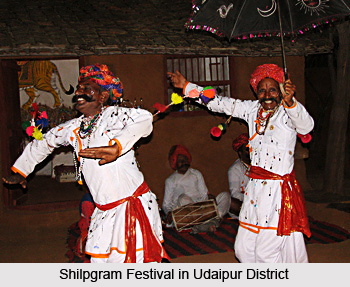 The Mewar Festival in March-April is when they gather to dress the images of Isar and Gangaur and then carry them in a ceremonial procession through different parts of the city. The procession winds its way to the Gangaur Ghat at Lake Pichola. Here, the images are transferred to special boats amidst much singing and festivity. Once the religious part of the festival is over, it is time for cultural events where Rajasthani culture is portrayed through songs, dances and other programs. The festival culminates with an impressive fireworks display. Like other fairs and festivals celebrated throughout the state, there is a lot of activity, which keeps the participants in a joyful frame of mind, eager to enjoy every moment.
The Mewar Festival in March-April is when they gather to dress the images of Isar and Gangaur and then carry them in a ceremonial procession through different parts of the city. The procession winds its way to the Gangaur Ghat at Lake Pichola. Here, the images are transferred to special boats amidst much singing and festivity. Once the religious part of the festival is over, it is time for cultural events where Rajasthani culture is portrayed through songs, dances and other programs. The festival culminates with an impressive fireworks display. Like other fairs and festivals celebrated throughout the state, there is a lot of activity, which keeps the participants in a joyful frame of mind, eager to enjoy every moment.
Gangaur Festival
Gangaur festival which comes in March - April is popular among women who pray to the goddess Parvati. A procession of caparisoned horses and elephants accompanying the image of Lord Shiva is the major attraction. During this festival, women carry the idols of goddess Parvati, also called Gauri, in the form of a procession to Gangaur Ghat which is one side of the Pichola Lake.
Teej Festival
Teej is also an important festival celebrated in all parts of Rajasthan. It comes in the month of July - August. It is the festival celebrating the advent of monsoon. Held during the monsoons, July-August Teej is also dedicated to Lord Shiva and Parvati and this time it is married women who pray for a happy and long married life. It is like a festival of swings, which are decorated with flowers and hung from trees. Young girls and women dressed in green clothes sing songs in celebration of the advent of the monsoon. Teej is celebrated mainly by the women folk of Rajasthan. Married women who idolize Parvati for her devotion to her husband Shiva celebrate Teej.
Places of Interest around Udaipur
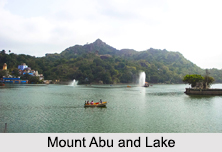 Places of Interest around Udaipur show the traditional culture of Rajasthan and the unique sensitivity of miniature paintings form and Mughal concept of designing that was famous in medieval era.
Places of Interest around Udaipur show the traditional culture of Rajasthan and the unique sensitivity of miniature paintings form and Mughal concept of designing that was famous in medieval era.
Udaipur is the perfect tourism destination in India. While on one hand it ideally represents the traditions of ancient India on the other hand it is considered one of the most beautiful places to be.
Mount Abu, 80km from Udaipur
Mount Abu is an only hill station in Udaipur. It is accessible from Udaipur by local transports. The state buses ply at regular intervals and they are comfortable to travel.
Eklingji, 22 km from Udaipur
Eklingji is celebrated for its 108 temples. Eklingji is an incarnation of the Mahadeva. It is the family deity of the Maharanas of Mewar.
Ahar, 3 kilometers from Udaipur
Ahar is known as the cenotaph town. It is known for the famous cenotaphs of the Mewar rulers.
Nagda, 23 kilometers from Udaipur
Nagda is an ancient city that was flourished during the rule of Bappa Rawal. It is famous for its Sas-Bahu Temple that is dedicated to Lord Vishnu.
Haldighati, 40 kilometers from Udaipur
Haldighat is a mountain pass known for the haldi (turmeric). It was the venue for the Battle of Haldighati.
Kankroli, 65 kilometers from Udaipur
It is the site of a 16th century temple of Dwarkadhish or Lord Krishna on the western shore of Rajsamand Lake. It is an important pilgrimage center for the Vaishnavites.
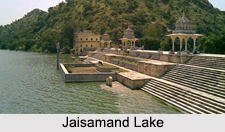 Kumbhalgarh Fort, 64 kilometers from Udaipur
Kumbhalgarh Fort, 64 kilometers from Udaipur
Kumbhalgarh Fort and the Kumbhalgarh Wildlife Sanctuary are nestled safely within the Aravalli Mountain Ranges. The wilderness of Kumbhalgarh is well represented at the sanctuary.
Ranakpur, 94 kilometers from Udaipur
It is famous for its Jain Temple. Besides this there is the Rawla Narlai Fort. The fort is now one of the leading heritage hotels in Rajasthan.
Jaisamand Lake, 51 kilometers from Udaipur
It is located 51 kilometers southeast of Udaipur. The Jaisamand Lake measures 14 kilometers in length and 10 km width. Till date it is one of the largest artificial lakes of the world. It was created by Maharana Jai Singh in the 17th century.
Jagat, 58 kilometers from Udaipur
The village of Jagat preserves the 10th century Ambika Mata Temple dedicated to one of the forms of the Goddess Durga.
Rishabdeo Jain Temple, 68 kilometers from Udaipur
It is a famous Jain temple, dedicated to Lord Rishabdeo, a Jain Tirthankara.
Dungarpur, 106.6 kilometers from Udaipur
Udai Bilas Palace, Juna Mahal, Gaibsagar Lake, Ek Thambhia mahal are the main attractions of Dungarpur. Dungarpur was founded in 1282 AD by Rawal Veer Singh. This region is also the heartland of the tribal people of Rajasthan.
Travel Information on Udaipur
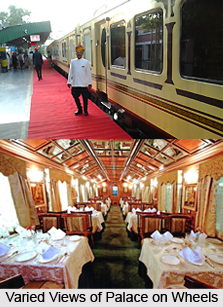 Udaipur is also known as the city of palaces. The exquisite buildings attract tourists throughout the year. For those who are touring the city travel information on Udaipur will come quite handy. The nearest airport to the city is the Maharana Pratap Airport. It is located at a distance of 22 kilometers from the city center. The airport is well connected with the major Indian cities. One can also get into Udaipur by road. From cities like Delhi, Jaipur and others the city is accessible by road. In case the one wants to travel in luxury then nothing can be better than the Palace on Wheels. Railway tracks also connect Jaipur, Delhi and Mumbai.
Udaipur is also known as the city of palaces. The exquisite buildings attract tourists throughout the year. For those who are touring the city travel information on Udaipur will come quite handy. The nearest airport to the city is the Maharana Pratap Airport. It is located at a distance of 22 kilometers from the city center. The airport is well connected with the major Indian cities. One can also get into Udaipur by road. From cities like Delhi, Jaipur and others the city is accessible by road. In case the one wants to travel in luxury then nothing can be better than the Palace on Wheels. Railway tracks also connect Jaipur, Delhi and Mumbai.
The travelers need not worry at all about accommodation units. Hotels are available in all ranges. A dream destination for many visitors, this place caters to all kinds of tourists. Heritage hotels are the most luxurious way of spending holidays. Other than these budget hotels are easily available. But one thing is common to all these hotels-the Mewari hospitality. The best season to visit Udaipur is from September to March. During the winter season the climate is apt for exploring the region. Light winter clothes will be required.
As far as communicating is concerned Hindi and English are widely understood and spoken. Hence the travelers will have no difficulty in conveying their messages. The local language of Udaipur is Mewari.
The culture of Udaipur is essentially Rajputana in nature. Udaipur is one of those places where annually a cultural programme is held on a grand scale. The folk culture is interesting and their songs and dances can capture the hearts of any traveler. The cuisine of Udaipur is vegetarian. One will be surprised to find the variety of vegetarian food that is available. They taste delicious too. The desserts are tempting too. To the surprise of many the primary religion in Udaipur is Jainism. Hinduism comes second. The Rajput rulers had built several temples and Jain religious sites. These are worth visiting. The local people are helpful. For them guests are like god. Hence all kinds of aid are extended to the visitors.
While the travelers are in Udaipur they must not miss the chance of watching a puppet show. The district is famous for such colorful shows. Modern means of entertainment are also available in Udaipur.
In case the travelers need medical attention there are hospitals scattered all around. Most of the hotels have medical assistance. For serious illness there are several hospitals. Chemist shops are also adequately found in Udaipur.
